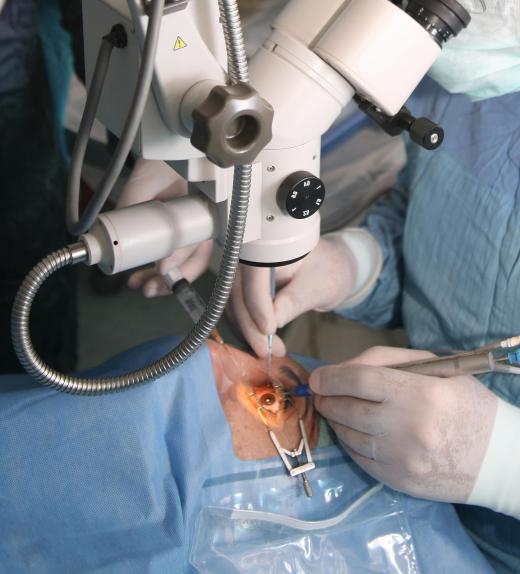A keratotomy is a type of eye surgery that is designed to improve the ability of the eye to focus correctly, in order to reduce or remove the need for corrective lenses. Keratotomy surgery usually refers to one of two types of eye surgery, radial keratotomy or photorefractive keratotomy (PRK). The radial form of the surgery normally involves an eye surgeon making tiny cuts in the cornea, which is the transparent layer at the front of the eye. PRK, on the other hand, involves the use of a laser to alter the shape of the cornea.
Radial keratotomy surgery was originally discovered by a Russian eye surgeon named Svyatoslav Fyodorov. After performing an operation to remove glass from the eye of an injured boy, he made the surprising discovery that once healing was complete, the patient’s eyesight had significantly improved. This led to the development of the eye surgery procedure to correct short sightedness by making incisions in the cornea from the pupil of the eye outwards, in a pattern similar to the spokes of a bicycle.

In this kind of eye surgery, a very precise diamond knife is used to make the incisions. A variation on this technique, called arcuate keratotomy, makes use of circular incisions. This method is also known as astigmatic keratotomy, and it can be used to correct astigmatism, where blurred vision is due to an uneven corneal surface.
Radial keratotomy in its original form is rarely used in modern eye surgery, as it has been replaced by more advanced methods of correcting eyesight. PRK is one of these methods. It is normally done with the use of a local anesthetic, and is a relatively rapid procedure, taking about ten minutes per eye. An eye surgeon uses a laser with an ultraviolet light to reshape the surface of the cornea. After the surgery, a special type of contact lens called a bandage contact lens is often used to protect the eye and facilitate healing.

PRK is no longer as widely used as it was in the past, due to the development of alternate laser eye surgery methods. These include procedures known as Laser-Assisted Sub-Epithelial Keratectomy (LASEK) and Laser-Assisted in-Situ Keratomileusis (LASIK), which use complex computers to control the laser. Typically, a patient who has undergone successful PRK, LASEK, or LASIK surgery will experience a gradual improvement in his or her vision, which may fluctuate between clear and blurry for a number of weeks.
